THE TERRIFYING STORY OF KUDZU VINE! NEWEST INVASIVE SPECIES ON CANADIAN SOIL | Gardening in Canada
Kudzu vine has a pretty unbelievable history in North America but the future of kudzu vine in Canada should have everyone talking. If you’re ever wondering how dangerous the seed packets from China could be this is the answer. In this video we talk about the history of kudzu, how it’s currently being managed in the USA & prevention methods you should take to stop the expansion of kudzu vine in Canada.
🚨 MERCH ALERT🚨
CHECK OUT MERCH!
Stickers, Mugs, Hoodies, Shirts, Face Masks!
https://teespring.com/stores/gardening-in-canada
Kudzu
Japan - Above ground roots die back every winter. Due to temperatures below 30 Celsius -22 f. The vine that ate the south.
1876 - brought from Japan to First ever worlds fair in Philadelphia. Was for the latest and greatest. Inventions shown included the typewriter, Alexander graham bells telephone, invention of popcorn, root beer & heinz ketchup. But also unfortunately kudzu for soil erosion protection & decor for shading porches.
In the early 1900s it was sold for soil erosion & a high protein cattle fodder. Fodder is essentially feed that has be cut to feed domesticated animals that aren’t grazed.
BUT this was all small scale & nothing compared to what was coming.
This brings us to 1935 - 1938 and the dust bowl. Not to much detail, let me know if the comments if you’d enjoy a creepy crawly video on exactly what caused the dust bowl from a soil science perspective. But in short poor soil management caused massive dust storms. In order to correct this ground cover was desperately needed & a fast growing fix was ideal.
Insert kudzu. 85 Million free seedlings to be exact...
Oh and the government subsidizes $19.75 US 27 Cdn per hectare planted. That’s $300 dollars in today’s currency but during the Great Depression! Everyone wanted a cut of that.
Perspective today is tree planters in B.C. get around $15 dollars cdn or $10 USD a day and plant around 1700 trees within a shift. There is around 1200 trees in a hectare based on the BC government planting density. MEANING DOUBLE
With these incentives 1.2 Million hectares were planted by 1946. The nail in the coffin was the boll weevil (looks like an alien ant eater) that desimated cotton crops across the USA. This meant farmers abandoned their farms & this left tens of thousands of kudzu hectares unchecked.
It took until 1953 (77 years after the world fair) for the us felt of ag to remove this plant as a suggested cover crop. 1970 it was deemed a weed. In 1997 it was labelled a federal noxious weed. This is serious because this label means the plant can no longer be transported dead, alive, seed, whole plant or portions of within states, across state lines or into the country as a whole. This weed currently occupies 3 million hectares of land, is gaining 150,000 hec annually, and cost $6 million annually to control.
Canada:
Nova Scotia & Leamington Ontario zone 5
WHY does it spread so well.
- 13 Cm or 5 inches a day nearly 3 feet a week from one vine.
- Legume family and can fix atmospheric N up to 95% of the plants requirements = great in any soil
- 40 % of the plants biomass is the root - 12 feet or 3.6 meters long and weight 300 lbs. perfect in drought land
- Propagates from small bits of root. So a simple small chunk of root in a truck load of soil will cause a plant.
Why is it bad
Competes
Carries Asian soybean rust deadly to farmers soybean, chickpea & pea production
Breaks tree branches, power poles, homes, etc.
Fixes:
🤣🤣
Start with mowing or grazing
Then burning & herbicides. Over and over again for up to ten years.
Prevention:
Don’t buy plants or seeds without researching
Don’t walk off hiking trail paths
Don’t transport soil
-
 14:14
14:14
Nature's Always Right
1 year agoWhy YOU SHOULD Plant Invasive Species!
6182 -
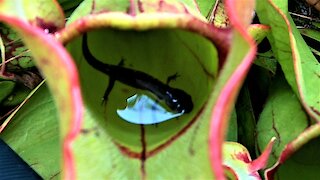 2:27
2:27
WildCreatures
4 years ago $0.85 earnedAstonishing animal-eating plant discovered in Canadian Provincial Park
5.2K2 -
 41:48
41:48
Permaculture
4 years agoQ&A: leaves on gardens, plant competition, soil microbiology, natural roof and a new view
15 -
 3:54
3:54
Earth Monkey
5 years agoPLANTING RARE FRUIT VINES and BUSHES | Clematis, Haskap, Hardy Kiwi, Porcelain Berry
47 -
 11:31
11:31
Ninja_Orchids
1 year agoDebunking Holcoglossum kimballianum prolific bloomer | What makes an orchid a keeper? #ninjaorchids
3 -
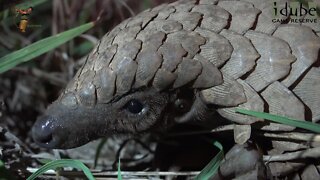 2:15
2:15
Rob The Ranger Wildlife Videos
7 years agoRare and Endangered Pangolin
45 -
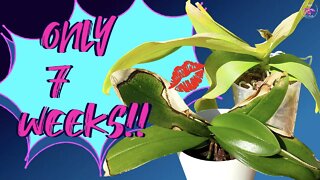 10:49
10:49
Ninja_Orchids
1 year agoExtreme Rescue Phalaenopsis 101 Week 7 Progress Report | Dumpster Phalaenopsis Rescue #ninjaorchids
36 -
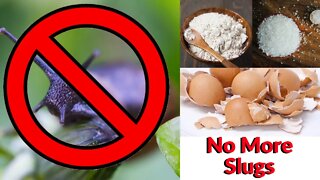 14:35
14:35
NoreensKitchen
4 years agoGARDEN UPDATE PLUS 4 NATURAL SLUG CONTROL OPTIONS!!
116 -
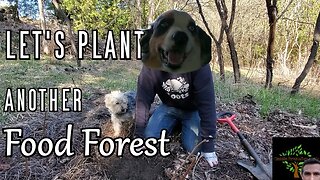 22:49
22:49
Permaculture
2 years agoLet's plant ANOTHER Food Forest!
103 -
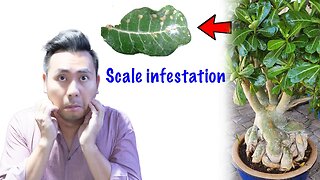 4:35
4:35
GreenMangoes
10 months agoThis pest will kill your Desert Rose (Adenium) #viral #bonsai #adenium #grow #garden GreenMangoes
87